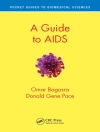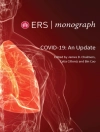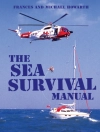This book describes key knowledge concepts, skills and up-to-date algorithms pertaining to common emergencies that can take place in a pediatric office, including: seizures, anaphylaxis and shock, and diabetic ketoacidosis. The authors supported by peer review from top specialists in Pediatric Emergency Medicine at the Baylor College of Medicine offer the first comprehensive educational resource on pediatric office emergency preparedness devoted exclusively to the practicing primary care health care provider and his/her team. During emergencies, providers and their staff are called on to work efficiently as a “code-team” which is a source of considerable apprehension for many primary care pediatricians. This unique reference guide contains a wealth of information and resources in a compact and practical form. It presents the most important knowledge, skills, office resources and team interactions required by practitioners to successfully treat pediatric emergencies in the office.
Spis treści
Chapter 1 : Community Partnerships in Pediatric Office Emergency Preparedness.- Role of Primary Care Provider in Emergency Medical Services for Children (EMSC).- Primary Care Providers and EMS.- Chapter 2 : The Office Emergency Response.- Sample Office Emergency Policy.- Code Log.- 2.1. Protocols for Common Pediatric Office Emergencies .- Asthma.- Blunt Head Trauma.- Bronchiolitis.- Cardiac Arrest.- Choking (Infant).- Choking (Child).-Croup.- Diabetic Ketoacidosis.- Seizures.- Shock and Anaphylaxis.- 2.2 .Special Situations.- Children with special care needs, Psycho-social emergencies, Disasters.- 2.3 .Equipment for Pediatric Office Emergencies.– Suggested list based on EMS response time.- 2.4. Medications for Pediatric Office Emergencies –Suggested list based on EMS response time.- Summary of medications (indications, dosing and special considerations).- Chapter 3 : Education of providers in Pediatric Office Emergency Preparedness.- 3.1. Basic Life Support Skills Airway Maneuvers/ Bag and Mask ventilation.- Intra-osseous Access.- Automated External Defibrillator (AED).- 3.2 . Health Provider Education .-Life Support courses (PALS, PEARS, APLS, ENPC).- Mock codes.- Teaching Office Emergency Preparedness and Mock Codes.-Sample videos.- Sample mock code scenarios.- Sample mock code scripts.- Mock code evaluation tool.-Sample Test .- Needs Assessment.- Chapter 4 : The Office Preparedness Quality Improvement Project.- Chapter 5 : Family Education.- Health emergencies and First aid.
O autorze
Dr. Rohit Shenoi is an attending physician in the Emergency Center at Texas Children’s Hospital, Houston and Associate Professor in the Department of Pediatrics at Baylor College of Medicine, Houston, Texas. He is Board certified in Pediatrics and Pediatric Emergency Medicine and has practiced pediatrics in diverse practice situations: primary care, urgent care and the emergency department.
Dr. Faria Pereira is an attending physician at the Texas Children’s Hospital Emergency Center, Houston and an Assistant Professor of Pediatrics at Baylor College of Medicine. She is the Director of Sedation and Analgesia in the Section of Pediatric Emergency Medicine at Texas Children’s Hospital. Her research interests include procedural sedation and analgesia and medical emergency preparedness in pediatric offices.
Dr. Joyce Li is an attending physician in pediatric emergency medicine at Children’s Hospital, Boston. Her interests include continuing medical education for physicians and research on emergency medicine department patient care and flow.
Dr. Angelo P. Giardino is a Clinical Professor of Pediatrics at Baylor College of Medicine in Houston, Texas. A board certified general pediatrician and sub-boarded in Child Abuse Pediatrics, Dr. Giardino evaluates patients in the office setting at Texas Children’s Hospital’s Special Needs Clinic and also coordinates a quarterly Continuing Medical Education program for primary care physicians and nurse practitioners participating with Texas Children’s Health Plan, where he serves as Chief Medical Officer.












